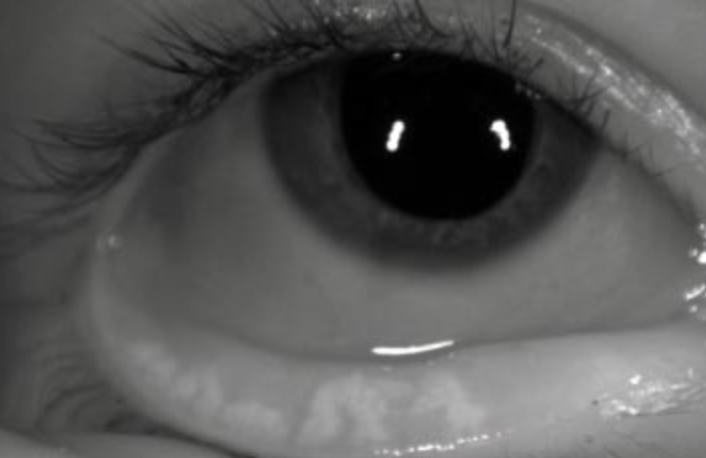 |
| High BMI, unhealthy die and reduced time spent outdoors are significant risk factors for MG atrophy in kids. Photo: Kambiz Silani, OD |
Upon evaluating meibomian gland (MG) morphology (atrophy and tortuosity) and risk factors in children ages four to 18, researchers recently shared their findings at the 2022 ARVO meeting in Denver about factors that may induce abnormal changes. Their study found that high BMI, an unhealthy diet and reduced outdoor activity are significant risk factors.
A total of 160 children at the Illinois Eye Institute were recruited, all of whom had a comprehensive eye exam and assessment of BMI by height and weight measurement. Tear breakup time (TBUT) and tear meniscus height were measured, the upper and lower eyelids were everted and the MGs were imaged. MG dropout scores and tortuosity were evaluated. Additionally, both children and their parents were surveyed on electronic screen time, diet and outdoor activity. To determine the relationship between MG morphology and potential risk factors, including age, gender, race/ethnicity, refractive error, screen time, diet, outdoor activity and BMI, linear multiple regression analyses were performed.
The team reported that the mean tear meniscus height was 0.23mm OD and 0.36mm OS. Mean noninvasive TBUT was 15.60 seconds OD and 15.96 seconds OS. Severe MG atrophy scores affected the following: 6.8% of upper eyelid OD, 19.7% of lower eyelid OD, 5.6% of upper eyelid OS and 19.7% of lower eyelid OS. Severe MG tortuosity affected the following: 72.7% of upper eyelid OD, 3% of lower eyelid OD, 65.6% of upper eyelid OS and 4.4% of lower eyelid OS. No association was found between MG morphology and screen time.
“MG morphological abnormalities are prevalent in children,” the study authors concluded in their abstract. “Risk factors for the abnormalities include high BMI, unhealthy diet and reduced outdoor activity. Eyecare practitioners should consider routine evaluation of the MGs in children during comprehensive eye exams, in addition to encouraging a healthy diet and time spent outside.”
Original abstract content © Association for Research in Vision and Ophthalmology 2022.
Parikh M, Pang Y, Sicks L. Risk factors for meibomian gland morphology changes in children aged 4 to 18 years. ARVO 2022 annual meeting. |


